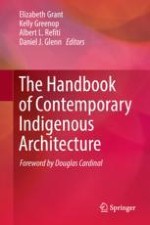2018 | OriginalPaper | Buchkapitel
30. “It’s Meant to Decay”: Contemporary Sámi Architecture and the Rhetoric of Materials
verfasst von : Elin Haugdal
Erschienen in: The Handbook of Contemporary Indigenous Architecture
Verlag: Springer Singapore
Aktivieren Sie unsere intelligente Suche, um passende Fachinhalte oder Patente zu finden.
Wählen Sie Textabschnitte aus um mit Künstlicher Intelligenz passenden Patente zu finden. powered by
Markieren Sie Textabschnitte, um KI-gestützt weitere passende Inhalte zu finden. powered by
